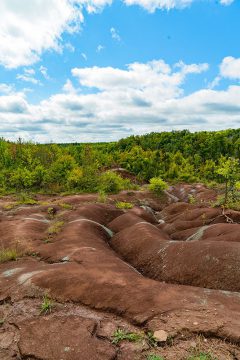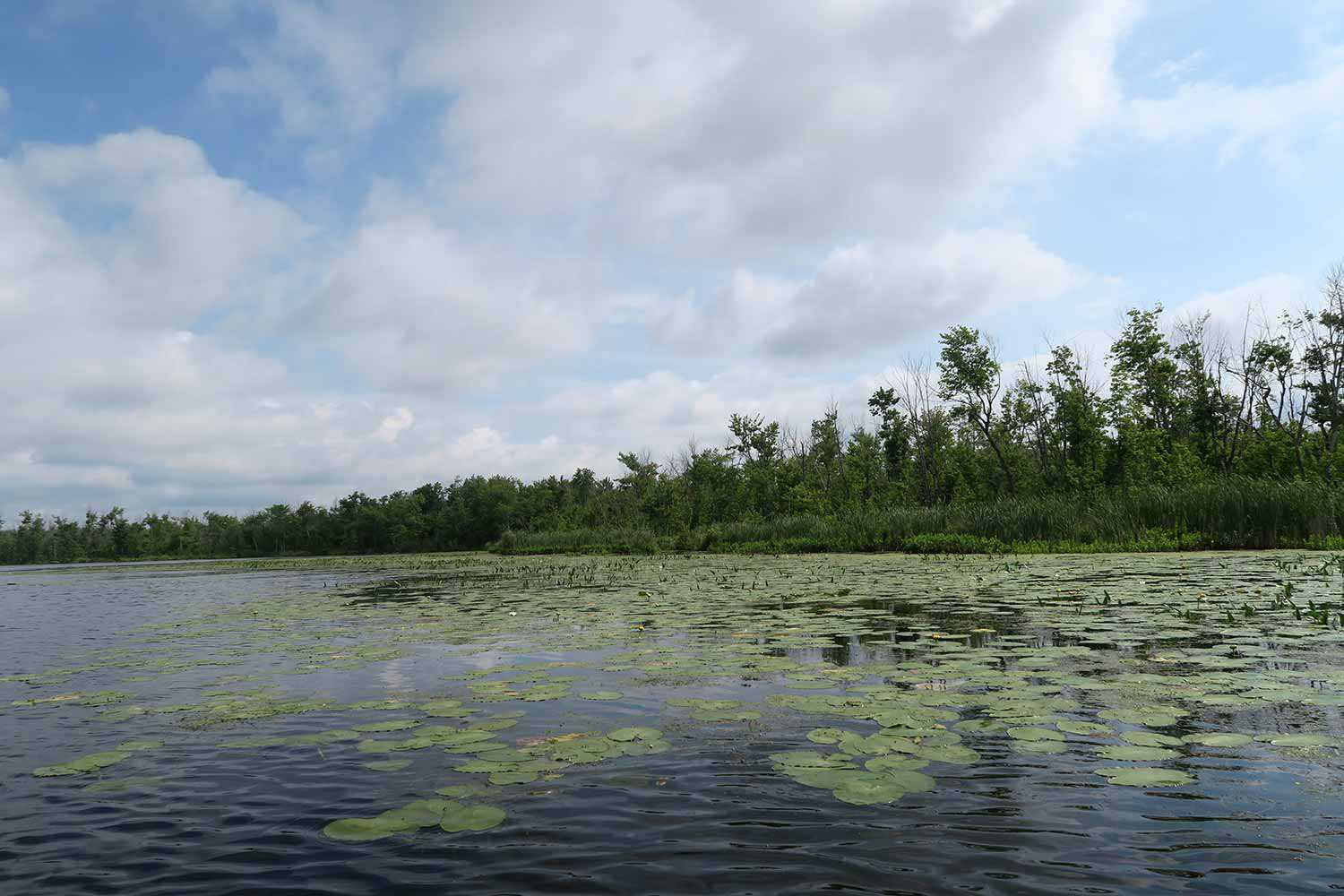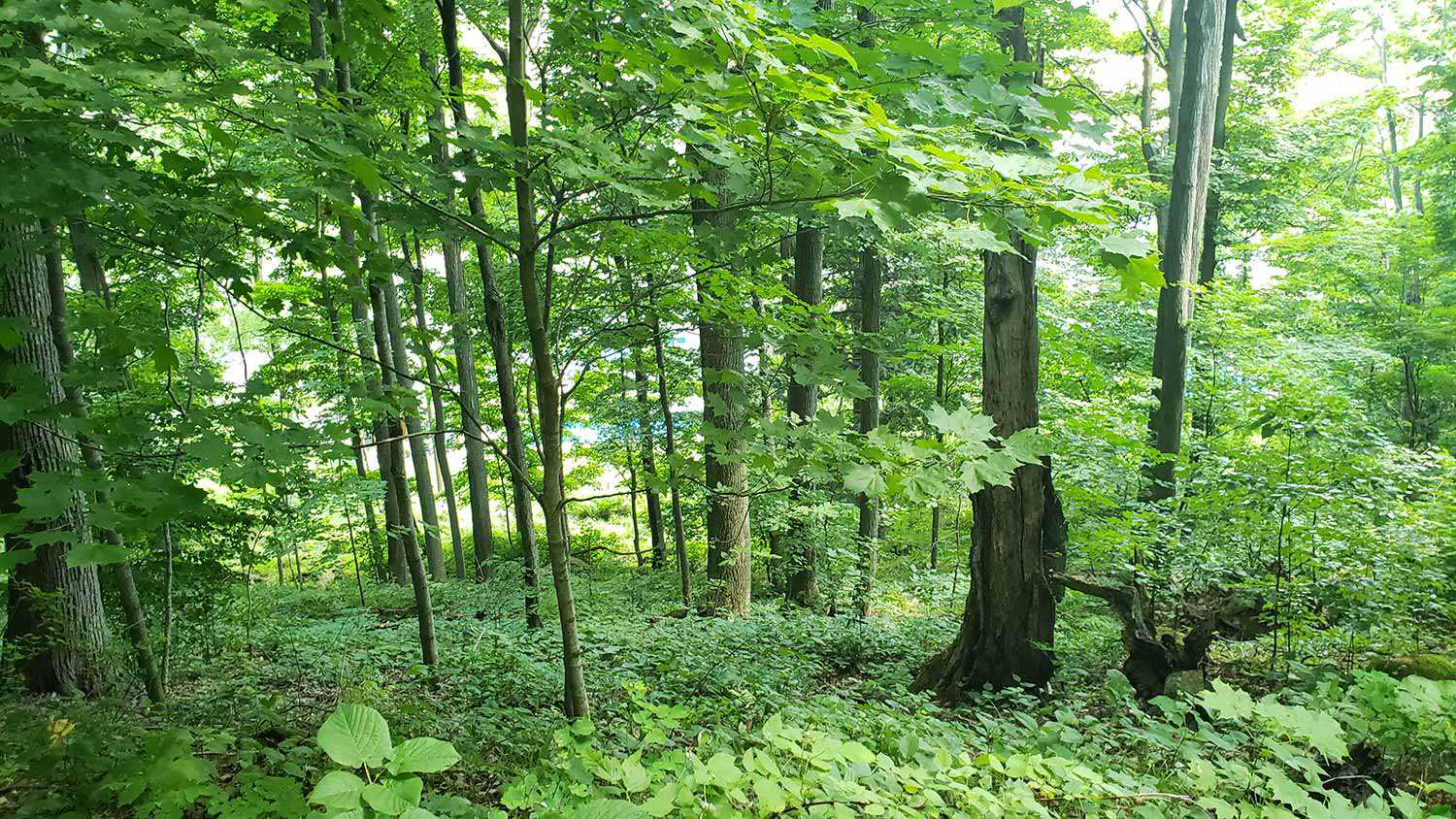Menu
The Badlands site is now closed for the season. See you in 2026!
Background
Ancestors of the Mississaugas of the Credit arrived here in the 1700s to hunt, fish and forage. They set up small, temporary villages on the river flats and practised horticulture, seasonally migrating and living lightly on the land. They stewarded this land over many generations, and it remains within their traditional territory.
European settlers cleared the land to establish homesteads and farms. From around 1850 to 1950, crops such as winter wheat, oats, potatoes and peas were grown here, and cattle grazed on the property. Signs of the apple orchard and a stone foundation from one of the original buildings still exist on the property.
The removal of trees and early farming practices caused the shallow topsoil to erode away, in turn exposing the underlying Queenston shale. Rain, snowmelt and freeze-thaw conditions accelerated the erosion of the shale, resulting in the unique ridge and gully landscape that you see today — known as the Cheltenham Badlands.
Since being exposed in the early 1900s, the shale eroded into a series of hummocks and gullies, producing the current distinctive landscape. Approximately 20 per cent of the property consists of badlands topography; the remaining portions of the site include mature forests, wetlands and regenerating cultural woodland. The property was acquired by the Ontario Heritage Trust in 2002 in collaboration with the Bruce Trail Conservancy and the then-Ministry of Natural Resources.
In June 2015, the Cheltenham Badlands closed to the public due in part to the accelerated erosion caused from increasing numbers of visitors. The Ontario Heritage Trust has been conducting research to monitor the geological and ecological change over time, as well as conservation and site improvements to protect the Badlands from further erosion. These important works are being implemented in partnership with the University of Toronto, the University of Waterloo, Credit Valley Conservation, the Region of Peel, the Town of Caledon and Bruce Trail Conservancy.
The Ontario Heritage Trust — along with Credit Valley Conservation and the Bruce Trail Conservancy — reopened the Cheltenham Badlands in 2018. The Trust assumed operation of the site in 2024.
Heritage significance
The Cheltenham Badlands property is designated as a provincially significant Earth Science Area of Natural and Scientific Interest. Due to its importance as a groundwater discharge area (groundwater emerges from the escarpment into streams), the property is also recognized as an Environmentally Significant Area. The cold-water stream on the property at the foot of the exposed badlands is a tributary of the Credit River. Different varieties of rare and uncommon flora thrive in and around the Badlands.
Recent conservation work
The Cheltenham Badlands is a unique and spectacular natural landscape feature that was at risk of damage from intense public use.
The Cheltenham Badlands Management Planning Team worked closely together with the Ontario Heritage Trust to plan for the long-term conservation and interpretation of the Badlands property. The Trust is grateful to Credit Valley Conservation, the Bruce Trail Conservancy, the Town of Caledon, the Region of Peel, the Mississaugas of the Credit First Nation, the Caledon Countryside Alliance and the University of Toronto.














